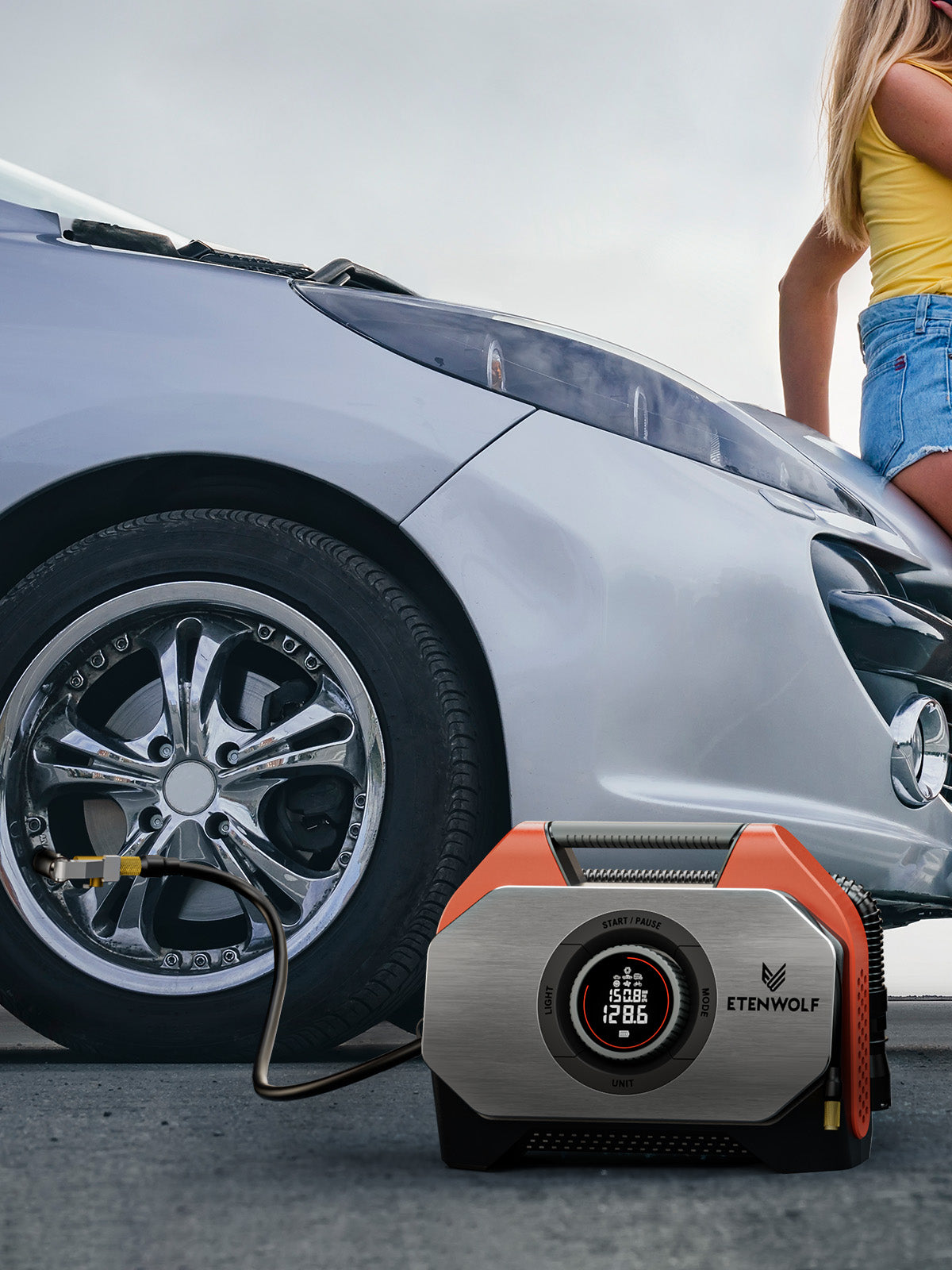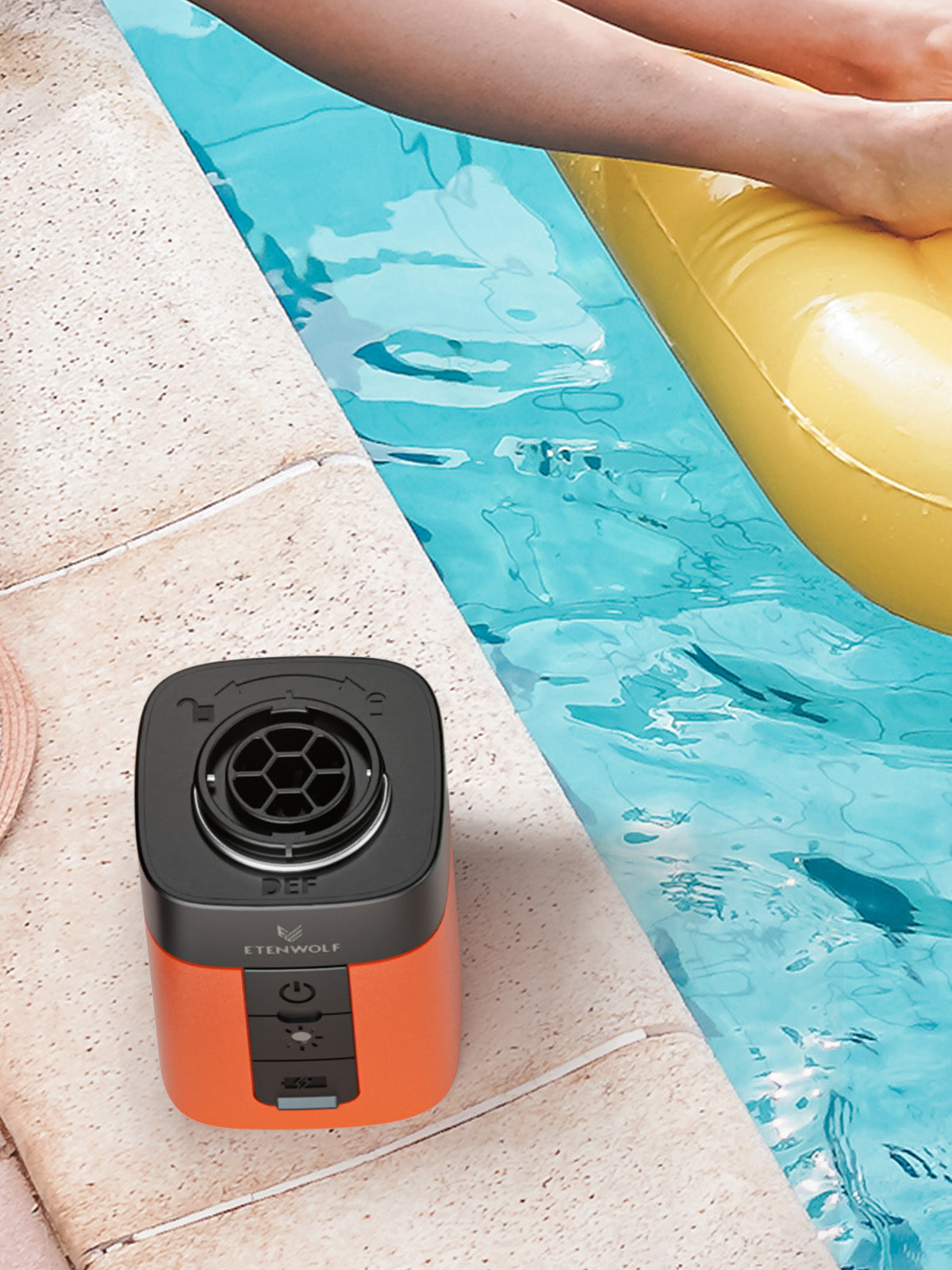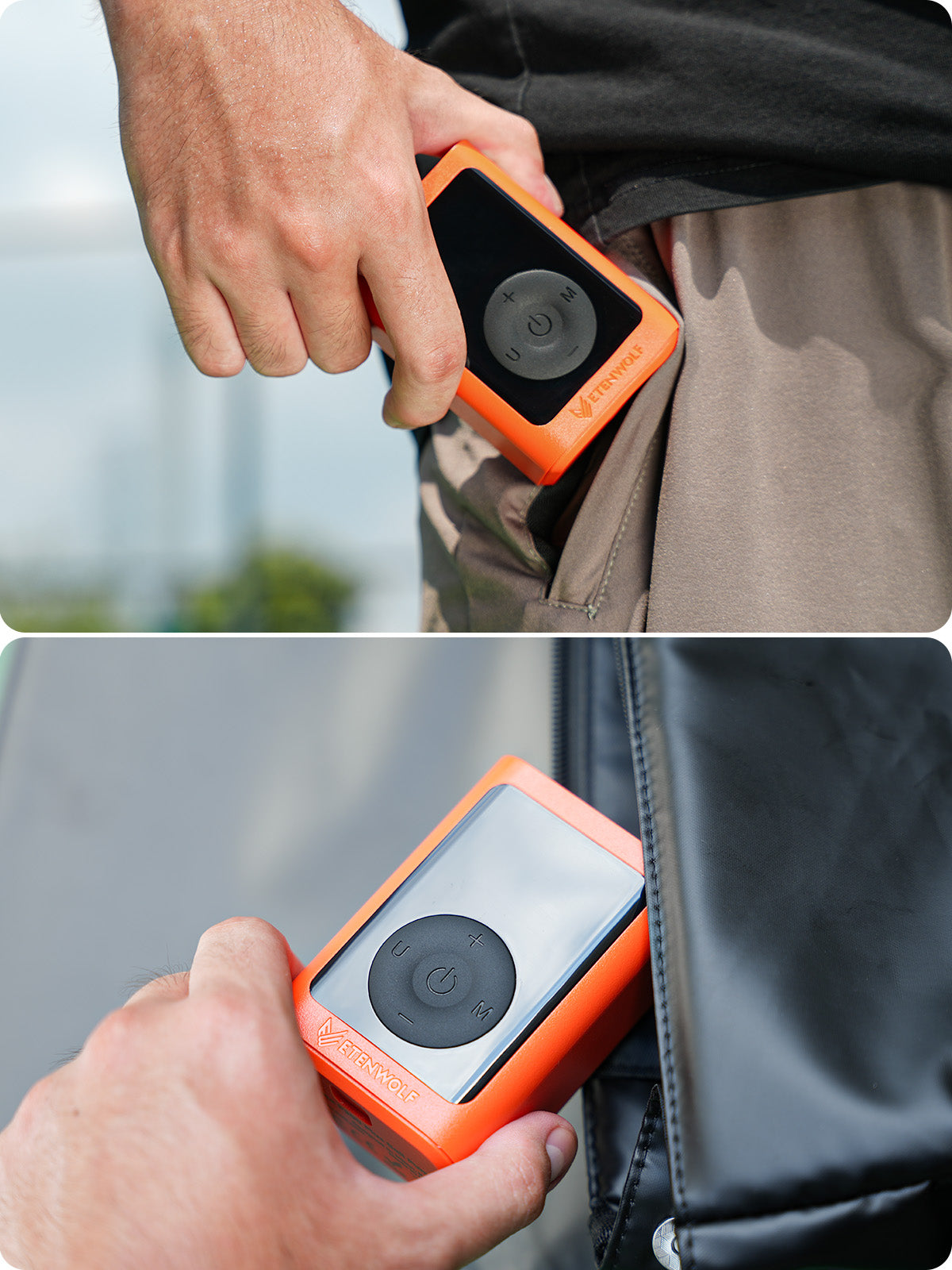Accurate tire pressure measurement is essential for both vehicle performance and safety, and this small but effective tool enables users to do just that. Fuel economy, tire wear, and general safety are all impacted by tire pressure in addition to how effectively a car handles on the road. While over-inflated tires can result in uneven wear and a rougher ride, under-inflated tires can cause poor handling, longer stopping distances, and even blowouts. Therefore, having an electronic tire gauge close at hand enables drivers to maintain the performance of their car and check tire pressure on a regular basis.

Step 1: Gather Your Tools
Before checking tire pressure, ensure that you have the right tools on hand. The primary tool needed is an electronic tire gauge, which we at Etenwolf proudly offer as part of our product line. Additionally, you should have access to an air compressor if adjustments are necessary. It’s also helpful to have a cloth to clean any dirt or debris from the valve stem. Having everything ready before starting the process makes it easier to check tire pressure efficiently.
Step 2: Remove the Valve Cap
Once you have your electronic tire gauge ready, it’s time to check the tire pressure. Begin by locating the valve stem on the tire, which is typically found on the inner side of the wheel. Remove the valve cap by turning it counterclockwise and set it aside in a safe place. Ensure that the valve stem is clean and free of obstructions. Any dirt or debris in this area can affect the accuracy of the reading provided by your electronic tire gauge.
Step 3: Measure the Tire Pressure
Now it’s time to take the tire pressure measurement. Firmly but gently press the nozzle of the electronic tire gauge onto the valve stem to ensure a proper seal. You should hear a hissing sound briefly, which indicates that air is escaping. This is normal and part of the measuring process. Hold the gauge in place for a second or two until the display shows a stable reading. At Etenwolf, we recommend noting down the pressure displayed. If it differs from the recommended pressure specified in your vehicle’s manual or on the tire placard, adjustments may be needed.
Step 4: Adjust the Tire Pressure as Needed
If the pressure is too low, use an air compressor to inflate the tire to the proper level. After inflating, wait a moment and recheck the pressure with your electronic tire gauge to ensure it has reached the desired level. Conversely, if the tire is over-inflated, carefully release air until you reach the correct pressure. It’s important to repeat the measurement process after any adjustments to confirm accuracy.
Conclusion
Using an electronic tire gauge is a straightforward yet vital task for any car owner. At Etenwolf, we believe that by following these simple steps, beginners can effectively maintain their tire pressure, ensuring better vehicle performance and increased safety. Regularly checking tire pressure not only improves fuel efficiency but also enhances overall driving comfort. With Etenwolf's user-friendly electronic tire gauge, achieving optimal tire pressure becomes hassle-free.







Leave a comment
This site is protected by hCaptcha and the hCaptcha Privacy Policy and Terms of Service apply.